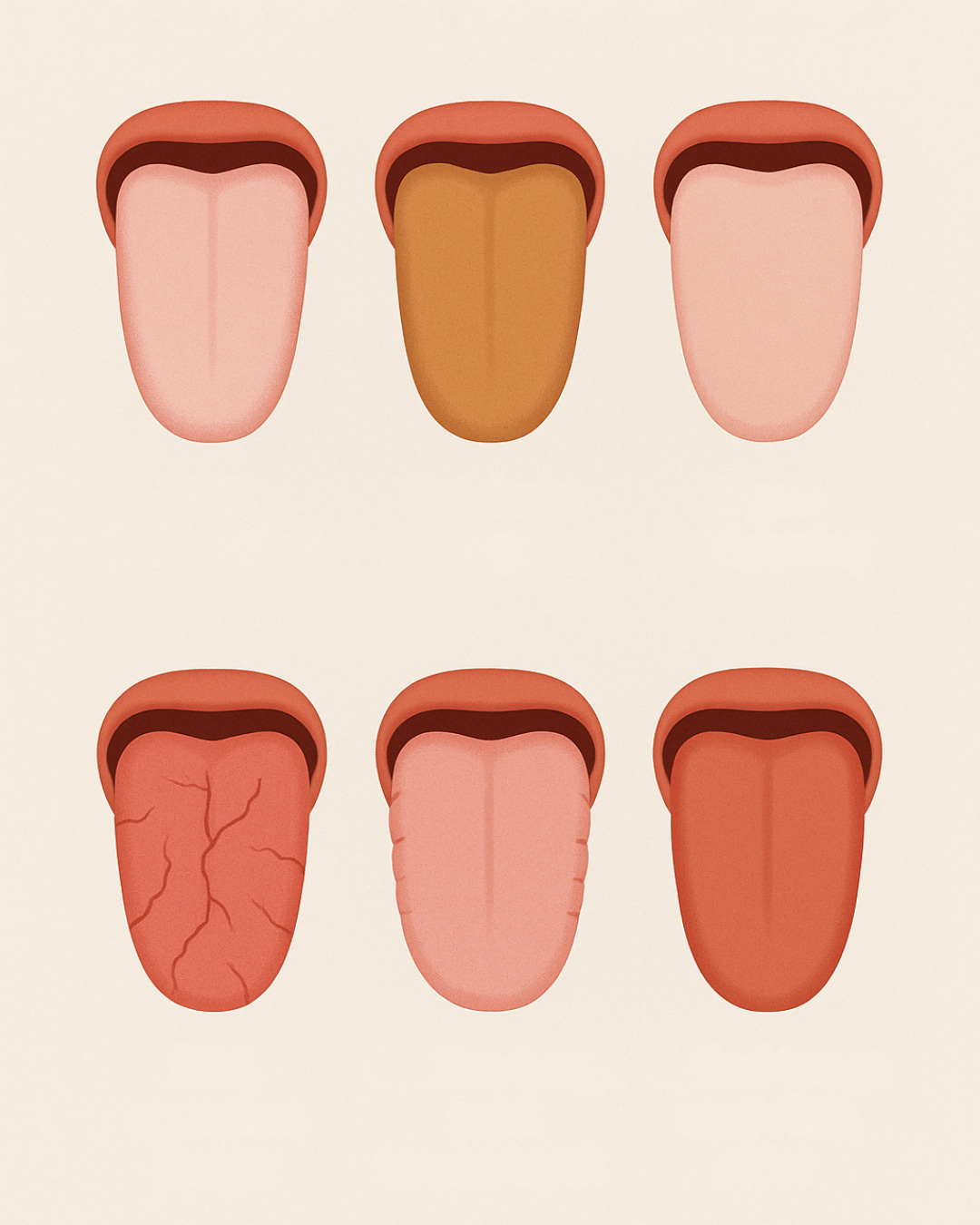The Tongue as a Mirror – An Introduction to Tongue Diagnosis
Part Five of the series The Basics of Chinese Medicine: Common Tongue Patterns and What They Reveal
When we talk about Chinese medicine, many people think of acupuncture, herbs, or the five elements. But another, equally important side of Chinese medicine is its unique system of diagnosis – a fascinating way of observing the body that is quite different from Western medicine.
Within this field, tongue diagnosis stands out as something concrete and visible, a tool that anyone can observe for themselves.
Sticking out your tongue is more than a playful gesture – it becomes a mirror of the body’s inner state.
It is important to understand: tongue diagnosis is not used to “predict” Western diseases or specific medical conditions. Instead, it helps us understand why certain symptoms exist and how they can be treated – by showing the underlying patterns in the body, such as cold, heat, dampness, or deficiency.
Why is Tongue Diagnosis Important?
In Chinese medicine, several different diagnostic tools are used: tongue diagnosis, pulse diagnosis, and abdominal diagnosis, as well as questions about lifestyle and the observation of skin, eyes, and face.
The tongue is especially valuable because it cannot be “controlled” in the same way as words or body language. It reveals what is happening inside the body – without a filter.
The Basics of Tongue Diagnosis
When examining the tongue, several aspects are observed:
Different zones of the tongue: each part of the tongue reflects different organs.
Tip: heart and lungs
Sides: liver and gallbladder
Center: stomach
Borders: spleen
Root: kidneys, intestines, bladder
The tongue body’s color: shows the quality of the blood and the yin/yang balance.
The form: narrow, swollen, with teeth marks, or with cracks – each form gives information.
The coating’s color and thickness: offers insight into digestion and the presence of dampness, phlegm, or heat.
The veins under the tongue: may reveal stagnation, especially of blood.
This is a vast field that can become very detailed. In this text, we will focus on some of the most common and easily recognizable signs.
The Tongue Changes – But Slowly
Unlike the pulse, which can shift within minutes, the tongue changes more slowly and therefore often reflects longer-term patterns in the body - But a pathogenic factor can also reveal itself on the tongue. At the same time, it can be affected temporarily by external factors – such as coffee, blueberries, or red wine – which can stain the coating.
A key piece of advice: do not scrape your tongue before examination, as this can distort the result.
What Does a “Normal” Tongue Look Like?
A healthy tongue has a light pink body, is neither too dry nor too moist, and has a thin, even, whitish coating. Its shape is balanced – not too narrow, not too swollen. Such a tongue reflects harmony in the body’s qi, blood, and fluids.
Common Tongue Appearances and Their Meanings
1. White Coating
A thin white coating is normal. But when it becomes thick and moist, it indicates cold and dampness in the body.
2. Yellow–Brown Coating
A yellow coating usually signals heat. If it is thick, it may suggest a stronger imbalance. A brown or darker coating indicates that the heat has gone deeper or that there is dryness.
3. No Coating
A completely “naked” tongue, without coating, points to a weakness of the body’s yin.
4. Red, Cracked Tongue
Cracks on a red tongue are a classic sign of yin deficiency with heat.
5. Swollen Tongue with Teeth Marks
When the tongue is enlarged and shows impressions of the teeth along the sides, it points to a weakness of spleen qi.
6. Tense Tongue with Red Sides
A tongue that looks tense, sometimes almost “stiff,” with redness along the sides indicates liver qi stagnation turning into heat.
Things to Keep in Mind
Tongue diagnosis is a powerful tool, but it must always be seen as part of a complete assessment. A tongue shows directions and patterns, but it is not a diagnosis in itself. To understand what the signs mean in your body, context is always needed: questions about symptoms, pulse diagnosis, abdominal diagnosis, and a holistic picture.
The beauty is that you can start observing your tongue in daily life. Noticing how it changes during a cold, after a stressful period, or when you sleep better can become a way of getting to know your body more deeply.
And What Do I Do With This Knowledge?
Looking at your own tongue may raise many questions. But remember: the purpose is not to make diagnoses, but to understand the patterns behind your symptoms – and to start working with them.
👉 You can read more in the already published series The Basics of Chinese Medicine:
https://rhythmsandroot.substack.com/s/chinese-medicine-basics
For paying subscribers, I also publish monthly workbooks. In these, I go deeper into the organs and how they can be supported and regulated – through diet, lifestyle, and specific exercises.
The next workbook, on the Earth element, will be released on September 1st.
So next time you look at your tongue, may it not only be a glimpse of the body’s surface – but also an invitation to listen more closely to the story your whole being is telling.



